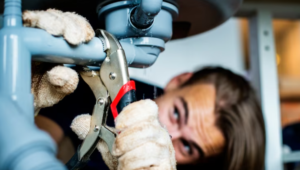Water balance is a very important part of pool maintenance. The same water balance must be kept for pools, spas and hot tubs. Water balance protects against water borne infections and pool damage.
Water balance has two basic components – pH and alkalinity levels. Both require chemicals. The balance is between the acidic and basic chemicals in the water. Hot weather or heavy swimming requires more chemicals, while colder weather or sparse swimming requires less.
Keeping good water balance is not that difficult. There are three types of testing tools you can use – test strips, liquid test kits or test meters. Until you are comfortable, test the water daily. Once you have a feel for it, go to testing two to three times a week.
pH Level
Just about anything that enters the water can throw this reading off – rain, debris, or sunscreen on swimmers. If it tests below 7, the water is too acidic and can cause corrosion of pool walls and irritate the skin of swimmers. Over 7.6 and the water is basic, causing cloudy water, deposits on pool walls, and drying of the skin. A pH increaser or decreaser is used to balance the pH level, which should be kept:
between 7.4 and 7.6
Alkalinity Level
This helps stabilize the pH level, keeping it from drastic increases and decreases. Alkalinity measures the level of all hydroxides, carbonates and alkaline substances in the pool water. The alkalinity level should be:
between 100 to 150 ppm
(parts per million) for proper pool maintenance. Only alkalinity increasers are used; decreasers are no longer made by most manufacturers.
Special Note:
If both the pH and alkalinity levels are low, use the alkalinity increaser first. It increases both levels. Then, add the pH increaser, if needed.
If both levels are high, the pH decreaser will lower both levels, which is why alkalinity decreasers are no longer available.
Math and Reading Are Important
Always double check your math. How much chemical you use always depends on the volume of water in the pool. It is important for proper pool maintenance.
Additionally, reading the instructions for each type of chemical is essential. You might wish to tag each chemical container with essential instructions, so you never confuse them. If you change the brand of a chemical, never assume it works the same as the previous brand you used. Read the instructions.
Pool Maintenance Log and Schedule
To ensure your pool’s water balance is maintained properly, you should create a testing schedule that can be checked off as the tasks are completed. Using a one-year calendar works well. A wall calendar hung where it will not be ignored works best. Mark what you will do and when for the entire swimming season. Or you can keep a log, using a lined notebook.
Whichever works best for you, note the date and time after each testing and task is completed. Note what chemicals you added and how much.










